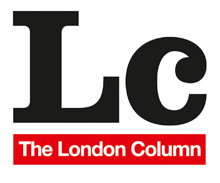Point of Interest. Photos Peter Marlow (3/3)
Posted: June 3, 2011 Filed under: Interiors | Tags: Joel Meyerowitz, Magnum, Martin Parr, Peter Marlow, Wapping Project Bakside, William Egglestone Comments Off on Point of Interest. Photos Peter Marlow (3/3)Gainsborough Studios, Islington, 2000. Photo © Peter Marlow (from Point of Interest, courtesy of the photographer and The Wapping Project Bankside*).
David Secombe writes:
Since William Egglestone’s pioneering use of colour print film as an artistic medium in the 1970s, an entirely new photographic aesthetic has developed. Egglestone built upon the achievements of an earlier school of American street photographers – Robert Frank, Garry Winogrand, and Lee Friedlander – by substituting colour in place of his forebears’ graphic black and white. Although Joel Meyerowitz and Joel Sternfeld were exploring similar territory at the same time, it was Egglestone’s 1976 show at New York’s Museum of Modern Art that made a landmark in the acceptance of colour photography as a serious art form.
Looking back, it is hard to comprehend the astonishment – even outrage – of the art establishment towards Egglestone’s super-saturated, over-sized prints of quotidian yet disquieting scenes of his native Tennessee. Egglestone’s embrace of what became known as the ‘snapshot aesthetic’ – unnerving observations of the mundane familiar to anyone who has ever been surprised by an anomalous photo amidst their family snaps – was revolutionary. The cool contemplation of unremarkable scenes was a long way from the approach of that earlier champion of colour photography, Ernst Haas, whose work echoed the Abstract Expressionists and who often worked for National Geographic: Egglestone’s pictures didn’t belong there.
Egglestone’s influence has been immense. The intensity of his treatment of colour found a UK disciple in Martin Parr, who abandoned his earlier, understated black and white exploration of the English scene (clearly under the influence of Tony Ray-Jones) sometime in the mid-1980s, in favour of a picaresque and brightly-coloured journey across Britain and beyond. In the 1990s many notable reportage photographers who had specialised in black and white followed the trend and abandoned their earlier practice in favour of a move towards colour, often preferring medium format to 35mm. At the same time, advances in technology made it easier to reproduce images from colour prints, obviating the frustrations and limitations of colour transparency film. And the rise of a new breed of art/fashion photographers – notably Juergen Teller and Wolfgang Tillmans – promoted a certain kind of affectless, abstracted snapshot chic.
The photo by Peter Marlow reproduced above represents the photographer’s move away from his earlier black and white photojournalism towards a more personal way of seeing the world. It is perhaps fair to say that whilst Marlow could have taken an image like this at any stage in his distinguished 30+ year career, it is the widespread acceptance of the post-Egglestone aesthetic that has emancipated this type of picture from the bottom drawer. The photo – taken on film – dates from 2000; two years later, sales of digital cameras outsold their film counterparts for the first time. Future historians may come to judge an image like this as belonging to a certain period in time – a period that began around 1970, and ended with the maturity of digital photo technology. In the digital age, the medium itself encourages promiscuity, along with its concomitant disposability: the temptation to delete an anomalous image to make space on an SD card is all too real. It requires real commitment to record the day-to-day strangeness of the world on a commodity as valuable as film.
… for The London Column. © David Secombe 2011.
* Point of Interest is showing at The Wapping Project Bankside, London SE1, until 2 July 2011.


